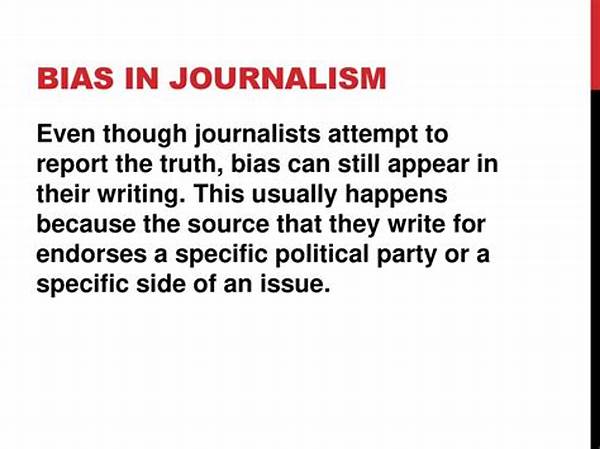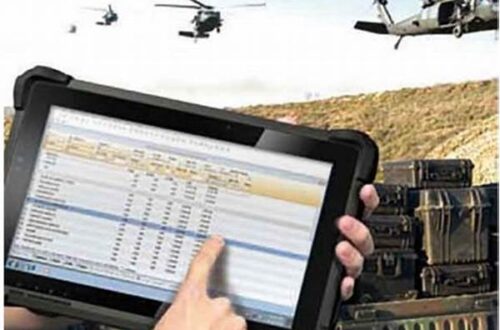Understanding Truth and Bias in Conflict Journalism
In the realm of conflict journalism, the dual concepts of truth and bias hold profound significance. Journalism, tasked with the noble pursuit of informing the public, must navigate the complex landscape of conflict reporting with integrity and objectivity. The pursuit of truth in conflict journalism is fraught with challenges, as information from conflict zones is often fragmented, biased, or outright manipulated. Reporters are required to sift through layers of propaganda and misinformation to unearth facts that might otherwise remain concealed. As a result, the journalist’s role in discerning these facts becomes akin to navigating a minefield, where any misstep can lead to the dissemination of erroneous information, thereby affecting public perception and policy formulation.
Moreover, bias is an inherent concern in conflict journalism. Journalists, consciously or unconsciously, bring their own perspectives and values into their reporting. This bias can be shaped by various factors, including political affiliations, cultural backgrounds, and personal experiences. Recognizing such biases is pivotal, as it influences how stories are framed, which narratives are emphasized, and what details are highlighted or omitted. Media organizations also play a role in this process, as their editorial policies and commercial interests can skew reporting, further complicating the audience’s ability to discern the truth. Hence, understanding both truth and bias in conflict journalism is essential for media consumers, as an informed readership is better equipped to critically engage with news content.
In response to these challenges, conflict journalists and media organizations are increasingly adopting rigorous standards and practices to mitigate bias and promote truthful reporting. Ethical guidelines, fact-checking protocols, and efforts to include diverse perspectives are pivotal in maintaining credibility. The use of third-party verification, engaging local journalists, and collaborating with independent fact-checking organizations are becoming cornerstones of conflict journalism. These measures, while not foolproof, represent the profession’s commitment to truth and transparency. Ultimately, as the world continues to grapple with complex and often brutal conflicts, the role of journalism remains indispensable, making the quest to balance truth and bias ever more critical.
Challenges in Presenting Truth and Bias in Conflict Journalism
1. Complex Information Environment: Conflict zones are rife with misinformation, making the pursuit of truth and bias in conflict journalism challenging. Journalists often lack reliable sources, necessitating careful verification before publication.
2. Reporter Subjectivity: Personal biases of journalists can influence narratives. Recognizing truth and bias in conflict journalism involves acknowledging individual perspectives and ensuring diverse viewpoints are covered.
3. Media Organization Influence: News outlets may have political or commercial agendas, affecting how truth and bias are represented in conflict journalism. These influences impact the selection, framing, and dissemination of news.
4. Verification Difficulties: Access to firsthand information in conflict areas is often limited. Ensuring accuracy in conflict journalism requires cross-referencing multiple sources to ascertain the truth while accounting for potential biases.
5. Ethical Dilemmas: Ethical considerations are paramount in conflict journalism. Striking a balance between truth and bias involves decisions about what to report and how to frame sensitive information without compromising safety or integrity.
Ethical Considerations in Truth and Bias in Conflict Journalism
Addressing ethical considerations in conflict journalism necessitates a robust examination of how truth and bias affect reportage. Journalists are curtailed by the ethical responsibilities that accompany reporting in volatile environments. They must balance the imperative to inform the public against the potential harm that certain information might cause. For instance, disclosing sensitive information can endanger lives, while withholding it can obscure the truth. This ethical tightrope demands that journalists exercise sound judgment, adhering to the highest standards of integrity and responsibility.
Furthermore, truth and bias in conflict journalism are influenced by the ethical requirement for impartiality. Journalists must conscientiously strive to present balanced views, even in situations where sources may be unreliable or information is sparse. Ethical journalism in conflict scenarios often requires a nuanced understanding of cultural contexts and an awareness of the inherent power dynamics present in such situations. Thus, in the pursuit of truth, journalists must be ever aware of their own limitations and biases, continuously querying their own perspectives and the sources of their information. This ongoing ethical deliberation is critical in maintaining the public trust and safeguarding the journalist’s role as an unbiased purveyor of news.
Strategies for Managing Truth and Bias in Conflict Journalism
1. Adopting Objectivity: Journalists should remain as objective as possible, setting aside personal biases when reporting. Truth and bias in conflict journalism are best managed by focusing on verifiable facts.
2. Implementing Fact-Checking Protocols: Effective fact-checking processes are crucial, verifying information accuracy and reducing the influence of bias in conflict journalism.
3. Engaging Local Experts: Collaboration with local journalists and experts provides nuanced insights, helping to navigate truth and bias in conflict journalism by incorporating diverse perspectives.
4. Incorporating Diverse Sources: Utilizing a wide range of sources diminishes the risk of bias and enhances the authenticity of truth in conflict journalism.
5. Emphasizing Transparency: Being transparent about sources and methods helps audiences understand the process behind truth and bias in conflict journalism, building credibility.
6. Ethical Storytelling: Stories should be framed ethically, ensuring that truth and bias do not compromise sensitivity to affected individuals and communities.
7. Ongoing Training: Journalists can benefit from continuous training on bias detection and fact-checking, ensuring proficiency in discerning truth and bias in conflict reporting.
8. Continual Review of Bias: Regular reassessment of personal and organizational biases can reduce their impact, improving the quality of truth and bias reporting in conflict journalism.
9. Encouraging Open Dialogue: Open discussions about biases and perspectives within media organizations foster a culture that prioritizes truth and objective reporting.
10. Adopting Technological Tools: Leveraging technology to verify information and detect misinformation supports truth and bias management in conflict journalism.
The Role of the Audience in Addressing Truth and Bias in Conflict Journalism
While the onus of maintaining truth and mitigating bias in conflict journalism largely falls upon journalists and media organizations, the audience plays a pivotal role as well. Understanding that news is curated content, consumers are encouraged to engage critically with the information presented to them. This critical engagement involves questioning the sources, analyzing the framing of stories, and considering what voices may be underrepresented or omitted altogether.
Additionally, media literacy becomes an essential skill for the audience in addressing truth and bias. Educating oneself about how news is produced and disseminated enables consumers to discern more effectively between credible reporting and sensationalism or propaganda. By adopting a proactive approach to news consumption, audiences contribute to a demand for higher standards in journalism. Furthermore, feedback mechanisms, such as reader comments and social media engagement, can hold media accountable and encourage the pursuit of truth over biased narratives. The interplay between journalists and their audiences thus becomes a dynamic relationship that potentially elevates the quality of conflict journalism.
Evaluating Institutional Practices on Truth and Bias in Conflict Journalism
Media institutions are fundamental in shaping how truth and bias are presented in conflict journalism. Their policies and practices determine the frameworks within which journalists operate. Institutional commitments to journalistic integrity include allocating resources for thorough investigative reporting and ensuring that journalists on the ground are adequately supported. Moreover, editorial policies must prioritize truth and seek to minimize bias, ensuring that diverse perspectives are included and that no single narrative dominates the coverage unfairly.
Institutions must also foster a culture of introspection and transparency about their own biases. This can be achieved through regular audits of reporting practices and outcomes, and by providing platforms for dialogue and feedback within the newsroom. Ultimately, media organizations must recognize that maintaining public trust hinges on their demonstrated commitment to accurate and balanced reporting. By prioritizing these principles, they can mitigate the risks posed by bias, fostering a more informed society and preserving the essential democratic function of the press in times of conflict.
Summary of Truth and Bias in Conflict Journalism
In summary, the intricate dance between truth and bias in conflict journalism requires a concerted effort from all stakeholders involved. Journalists operating in conflict zones face the formidable challenge of distilling accurate information from a sea of misinformation and biased accounts. Their success hinges on a dedication to rigorous fact-checking and an awareness of their subjective influences. Such vigilance guards against the pitfalls of disseminating unverified or slanted content that could mislead audiences and exacerbate conflict situations.
Simultaneously, media institutions bear responsibility for fostering an environment conducive to truthful reporting. They must implement robust ethical guidelines and promote transparency in newsgathering processes. Moreover, they are tasked with equipping reporters with the necessary tools and support to navigate the complexities of conflict environments. On the audience side, media literacy and critical thinking are indispensable for distinguishing genuine reporting from biased narratives. Collectively, these efforts nurture a media ecosystem where truth prevails over bias, ultimately serving the broader public interest in understanding global conflicts.





